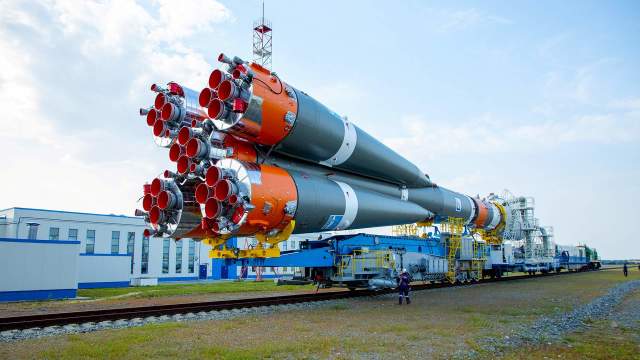And can the unfinished Russian expedition to the Earth satellite change the flight program
The materials transmitted by Luna-25 will become the basis for creating a high-precision landing system for future expeditions to the Earth's satellite. This became possible despite the fact that the station managed to work only incomplete nine days instead of the planned year. Scientists-developers of research instruments installed on the spacecraft told Izvestia about important observations made during the unfinished Russian mission. About when a scientific mission to the moon may be repeated and whether Russian scientists are ready to conduct it — in the material of Izvestia.
High-precision landing system
The mission of Luna-25, despite the death of the station, was not in vain — according to the staff of the Institute of Space Research of the Russian Academy of Sciences (IKI RAS), who were responsible for the scientific support of the expedition.
Izvestia Reference
The Luna-25 automatic interplanetary station is the first part of a large—scale Russian program for the development of an Earth satellite. It launched from the Vostochny cosmodrome on August 11 and was supposed to land 10 days later near the south pole of the Moon. The tasks of the station included working out a soft landing near the south pole of the Moon and studying its surface and exosphere with onboard instruments for one year.
Among the most important studies is the search for volatile water compounds in the lunar soil (regolith), the study of its chemical composition, as well as interaction with the solar wind. However, on August 19, during the transition to a pre-landing lunar orbit, the station left its planned trajectory and crashed on the surface of the Moon.
Before the accident, scientists managed to make a number of observations that gave specialists the material to prepare for the next lunar expeditions.
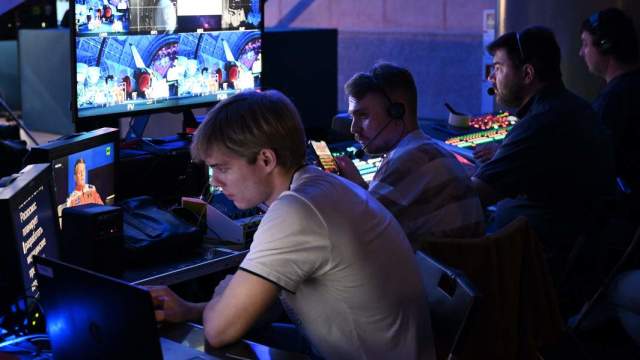
Photo: RIA Novosti/Maxim Blinov
Image source: iz.ru
— In total, eight scientific instruments were installed at the station. During the flight, they were included in the interplanetary section and in the orbit of the Earth satellite. Thanks to these events, the equipment was checked for serviceability and operability," said Academician Lev Zeleny, scientific director of the ICI RAS and scientific director of the first stage of the Russian lunar program.
It was important to confirm, the scientist noted, that the instruments withstood the launch into Earth orbit and the flight in the vacuum of space. At the same time, practical results were also achieved.
The most obvious of them is the operation of the onboard cameras. Photos taken by the Luna-25 station in flight flew around the world. Images of the Earth's satellite surface were also obtained. According to them, specialists have linked the spacecraft to a digital terrain model developed at the Moscow State University of Geodesy and Cartography.
— First, we linked the images to the coordinate system, after which we solved the inverse problem — we determined the location of the station based on the image. Thus, a contribution was made to the creation of a system of planetary navigation, which will make it possible to navigate in the circumlunar space with an accuracy of up to meters. Such a system is necessary for high—precision landing of future missions," explained Ivan Polyansky, chief designer of the STL-S service television system project.
Scientific equipment withstood
Another achievement of the interplanetary station was the capture of a micrometeorite in the orbit of the Moon. It was registered by the PmL device, designed to study lunar dust near the surface of the Earth's satellite.
"It's a particle a few microns in size. Its source could be the Perseid stream, which the device crossed during the flight to the moon. The collision speed of the station with the micrometeorite was 58 km per second, — said Ilya Kuznetsov, a junior researcher at the Department of Planetary Physics of the ICI RAS.
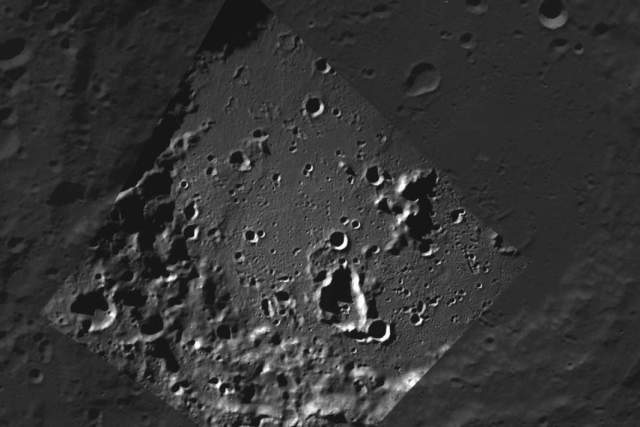
HADRON-LR registered the most intense lines of chemical elements of the lunar soil
Image Source: Photo: Telegram/roscosmos_gk
Lev Zeleny also noted the operation of the HADRON-LR instrument, designed to study the composition of the lunar soil. It was assumed that he would explore the surface layer to a depth of 1 m, measuring neutron and gamma radiation and determining the elemental composition of the soil. Scientists turned on this equipment twice during the flight on the one-hundred-kilometer orbit of the Moon and received radiation spectra of chemical elements contained in its rocks, as well as data on the neutron flux from the surface of the Earth's satellite.
In addition, the ARIES-L device was tested for the first time in unearthly conditions. During the expedition, he had to study the solar plasma flows in the exosphere (plasma-dust envelope) The moon. In space, scientists measured the dark current of the device, which occurs in the conductor in the absence of external voltage. This made it possible to create a program for accurate calibration of such equipment.
Also in flight, the specialists tested the LMC, LIS-TV-RPM and LASMA-LR devices, although they were designed to work only on the surface.
The first of them had to dig a groove and take soil samples. The second had the opportunity to look into remote corners that are not accessible to onboard cameras, and study large objects such as rocks or meteorites. And the third was necessary to determine the chemical composition of the samples taken on the spot. During the test inclusions, this equipment showed reliable telemetry and controllability. The LIS-TV-RPM spectrometer also captured the "spectrum of space", data about which would be needed later for instrument calibrations.
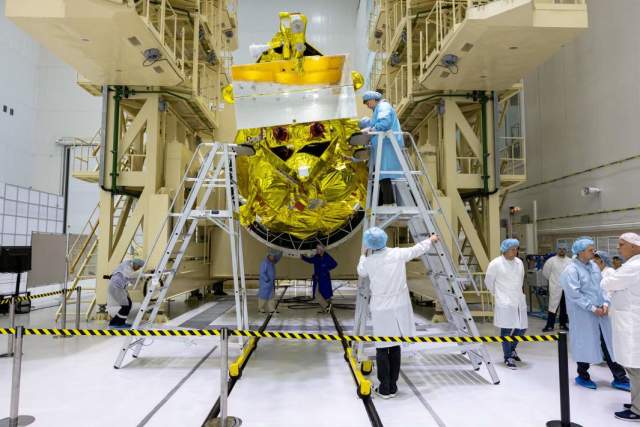
The Luna-25 lunar spacecraft at the Vostochny Cosmodrome
Image source: Photo: REUTERS/ROSCOSMOS
— We saw that all scientific equipment withstood the space flight and was ready to work on the lunar surface. If a decision is made to repeat the Luna-25 mission, the ICI RAS will be able to quickly ensure the supply of equipment necessary for research, since spare samples were made," said Maxim Litvak, one of the mission coordinators, head of the neutron and gamma spectroscopy laboratory of the Department of Nuclear Planetology of the ICI RAS.
In his opinion, the question of repeating the Luna-25 expedition is relevant, because, despite the failure, a significant part of the way has already been passed, and experts understand how the spacecraft can behave in certain conditions.
Learn lessons
In turn, Lev Zeleny noted that the creation of a new spacecraft can be accelerated if scientists are relieved of excessive bureaucratic burden. According to him, on average, when developing projects, about half of the time is spent working with hardware, with hardware, the rest is spent on drafting various papers.
Director General of the Roscosmos State Corporation Yuri Borisov, summing up the results of the Luna-25 expedition, also suggested considering the possibility of launching a similar mission in the coming years.
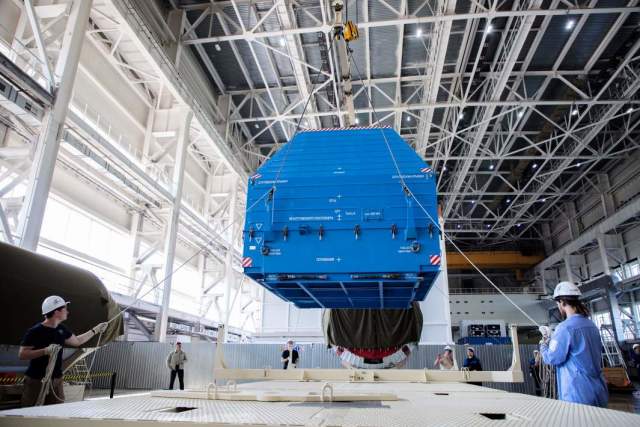
Photo: RIA Novosti/Roscosmos Press Service / RSC Energia
Image source: iz.ru
— All instruments of the station have passed flight tests. Their inclusion showed that they are workers and the general idea of the scientific content of the mission is correct. This will facilitate the preparation of the next expeditions," explained to Izvestia a specialist in interplanetary technology, historian and author of the book "The Moon. History, people, technology" Pavel Shubin.
He added that it was also important to work out the interaction between the specialists of the ICI RAS, and the NGO Lavochkin, the parent organization for the creation of Luna-25.
— Now we need to continue developing the domestic lunar program. It provides for the progressive complication of missions. At the same time, it is necessary to use unsuccessful experience, honing technologies and devices that have proven themselves, — says Mikhail Kotov, a scientific journalist, author of the Telegram channel "Contact of the Rise".
He explained that it is just as difficult to land on the moon as on other planets. Therefore, a soft landing on an Earth satellite will further help in the exploration of Venus, Mars and other cosmic bodies.
— At the launch of Luna-25, our rocket scientists and scientists proved that, despite the gap in the continuity of generations of designers, they can create workable technologies for space research, and that there are teams ready to tackle these complex tasks, — said Anton Pervushin, a St. Petersburg writer, journalist and researcher of the history of science. The loss of the device will help to learn lessons and build a more reliable station, the expert concluded.
Andrey Korshunov
